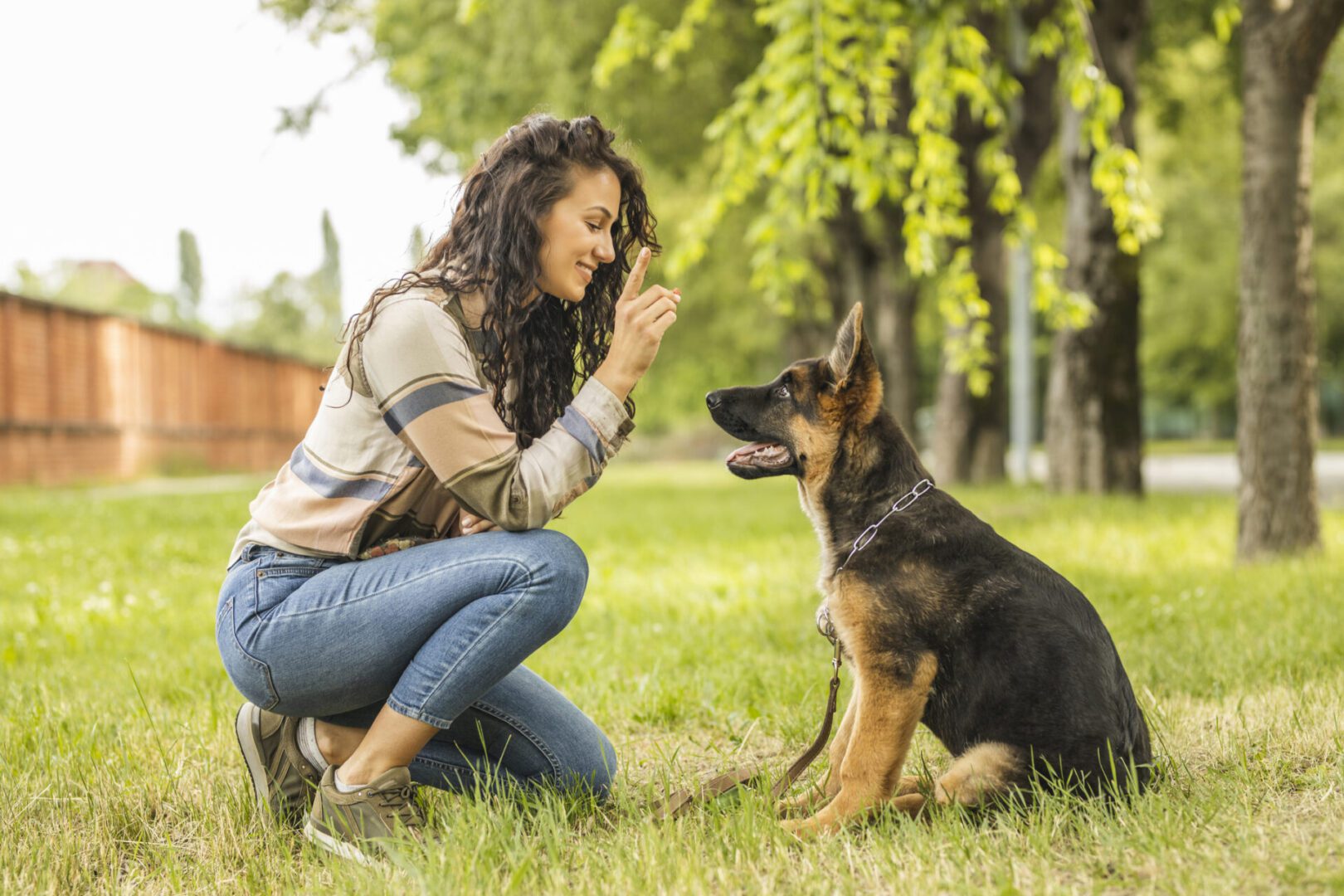Dog Separation Anxiety Training
Dog separation anxiety is often mislabeled or misunderstood. True dog separation anxiety is not at all that common. It's more of a 'home alone' issue, as the dog is a social or pack-living animal. Being alone, separated from the pack/family, is not a natural state for the dog. It creates stress and anxiety. Dogs must be conditioned to being left alone. Otherwise, behaviors such as barking, destructiveness, escape attempts, along with toilet accidents, may occur. In many "home alone" situations, the owner has been a primary contributor by giving their dog too much, or the wrong kinds of attention when home, creating needy and lonely anxiety when left alone.


Some Examples Are
Our Dog Training Philosophy
It's important to keep a bit of balance, so the dog does not feel so alone when you are gone. Here are some suggestions to ease the dog's stress. It is imperative that the dog receive quality attention. Dogs are social creatures and need playtime. It is very important that the owner set the beginning and end time for the game. The dog should not demand that the game be played. Have a specific fetch toy and take it out only when it is time to play. If a dog is good for 6 fetches, stop at 4. Gradually add a repetition each day until the dog will do 3 dozen back and forth. Put the toy away when the game is over. This will ensure that the dog stays motivated and doesn’t lose or destroy the toy. Have chew toys for the dog when not playing. Do not play fetch with the dog's chew toys or when he demands, as that will encourage pushy, demanding behaviors. Controlling when to and what to play with will put you in the role of leader, as well as prevent pushy behaviors. Avoid chase, wrestle, and rough-house games. Stick to task-oriented games rather than competing games, as the latter will make you more of a littermate in the dog's mind instead of a team leader.

Why Balance, Routine, and Controlled Games Matte
Calmly walk the dog 2x a day for 30 minutes. Once before and once after work.
When leaving the dog alone, let it out for a quick toilet and be sure to leave the radio on.

Create Calm with Consistent Routines
Regarding Dog Training or Dog Problem Behavior Counseling:
Give us a call or email for a free evaluation of your dog problems.
NEW YORK CITY (NYC), WESTCHESTER & NASSAU COUNTY:
(914) 787-0692
BERGEN COUNTY, NORTHERN & CENTRAL NEW JERSEY:

